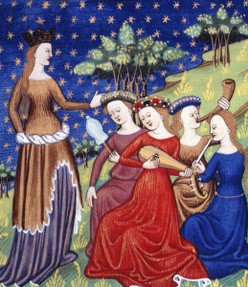 There is one final clue though, which seems to suggest that Chrétien de Troyes was female after all.
There is one final clue though, which seems to suggest that Chrétien de Troyes was female after all.
Medieval French poets and troubadours often embedded cryptic messages to each other into the fabric of their verse. Audiences and readers would be none the wiser, but fellow professionals could read the code.
A device called a 'senshal' was employed. It assigned a pseudonym to fellow poets, in order to gain their attention and indicate that the next lines were for them.
The senshal often referenced a phrase from the subject's work, or something known about the individual.
This was accompanied by verses blatantly inspired by the work of the other poet. For a stanza or two, each line would ping off the other, matching it in meter, content or rhyme. Enjoined, like some kind of poetic dance, with the twinned words seeming to mirror or answer each other. It was deliberate imitation, used as flattery, dismissal or merely a wry nod of acknowledgement.
Chrétien was well versed in the device. The poem D'amors Qui m'a Tolu a Moi for a moment there reflects in every way lines from Bernart de Ventadorn's Can Vei la Lauzeta Mover.
And it was done in homage to Chrétien too.
Aristocratic troubadour Raimbaut d'Aurenga, Lord of Orange and Aumelas, reached out via the senshal Carestia. It's a pun on the name Chrétien, but could also reference a line from D'amors Qui m'a Tolu a Moi, wherein the poet wrote about the 'scarcity of time'. Carestia is a word that still carries the same connotations in the Spanish language. There it can be used for loss, destitution, famine and the high cost of living causing hardship.
Yet it has its etymology, in the Romance languages, as a concept carried back from Byzantium by the Crusaders. This was only just happening in the 12th century. For Chrétien and Raimbaut, the notion of kharistikion (the Byzantium root word of carestia) might not yet have become so divorced from its eventual meaning.
There it meant a benediction. Holy gifts or donations given by the Church to those deserving some allowance. Like a man claiming land after performing military service for a certain number of years.
During the 10th century, Byzantium aristocrats used their privilege and power to force monasteries into relinquishing all land, stock and other wealth as charity. Naturally the beneficiaries were the charisticary aristocrats themselves. Passing Crusaders saw the aftermath, with impoverished monks begging for food in the street. Hearing that carestia was the cause, they began to associate the word with the effects of its misuse.
Why did Raimbaut choose Carestia as his senshal for Chrétien? If it's because the poet knew that Chrétien was a monk, who'd been diverted into the aristocratic home of Marie de France, then its further confirmation that Chrétien was male.
But if it's merely a play on the theme of 'scarcity of time', then a whole new insight opens up.
Chrétien's line was all about courtly love (as usual). It addressed the male hero, beseeching him to keep the faith, despite his lady's apparent lack of interest. Raimbaut responded with these lines:
Carestia, bring me joy
from that shelter
where is my lady, who keeps me rejoicing
more than I myself can tell.
In short, a contemporary nobleman moving in the same royal circles - who either knew Chrétien or could easily find who did - publicly referred to the poet as 'my lady'.








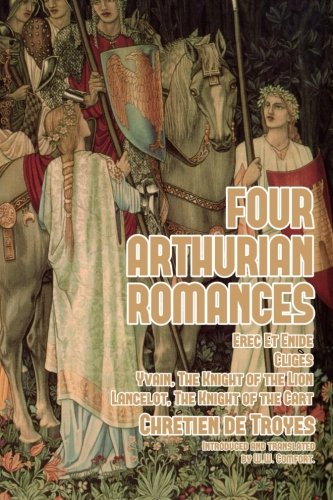







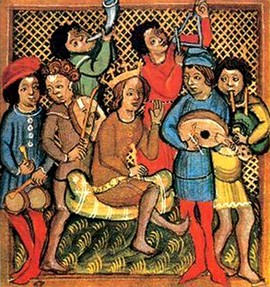 Within the Arthurian Romances, Chrétien occasionally discussed the real world, all in the third person.
Within the Arthurian Romances, Chrétien occasionally discussed the real world, all in the third person.


 There is one final clue though, which seems to suggest that Chrétien de Troyes was female after all.
There is one final clue though, which seems to suggest that Chrétien de Troyes was female after all.





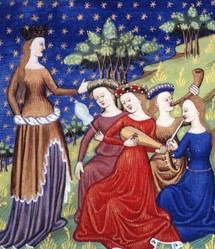

 St Tydecho's Churches in West Waleson 09/03/2014
St Tydecho's Churches in West Waleson 09/03/2014
 Goodies for an Outlander Premiere Partyon 03/06/2015
Goodies for an Outlander Premiere Partyon 03/06/2015
 Holocaust Memorial Day Interview with Rainer Höss, Grandson of Rudolf Architect of Auschwitzon 01/24/2015
Holocaust Memorial Day Interview with Rainer Höss, Grandson of Rudolf Architect of Auschwitzon 01/24/2015
 Romantic Valentine Gifts for an Outlander Fanon 01/16/2015
Romantic Valentine Gifts for an Outlander Fanon 01/16/2015

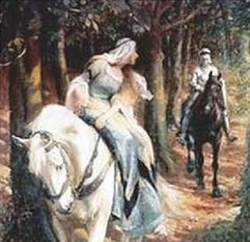
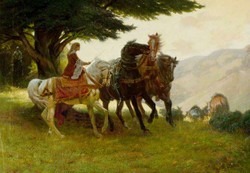
Comments
Thank you very much. I'm glad it was worth the read! I totally enjoyed the journey of discovery involved in writing it.
Interesting comments (yours -- and others'!:), and, as always, I love the way you spin your yarns :-) Great read!!
Awww! Thank you very much. :)
Chrétien was indeed at the top of his (or her) game.
Jo - You are an expert in writing history. I marvel at the stories and the narration. Chrétien de Troye appears to be a talented poet whether or not it was a female.
I much rather some long, detailed and informative, than little titbits here and here. Though, like you, I do love Twitter.
I don't know, to be honest, Jo. The paper used to have a webpage for them, but now they're just scattered throughout the content. I would say minimum 1,500 words, which, when an article here may be 400 words minimum, is just a tad longer. I personally love the longer articles and pieces. Sure, I'm a Twitterati as well, but when I write articles, I Write Articles. With some information behind them. Similar to your approach, only nowhere near as many right now.
How long are they?
@EmmaSRose The Guardian has a wonderful thing called 'longreads'. Now THAT's what I call an article...
It's posted now. You haven't yet seen the size of it. Two whole days writing it! >.> I'll write proper things when I stop having so much fun. :D
I hadn't thought that about Wizzley letting us play with length. I guess we're really lucky!
WordChazer - Ah! And there we go. Christian can be a female name too!